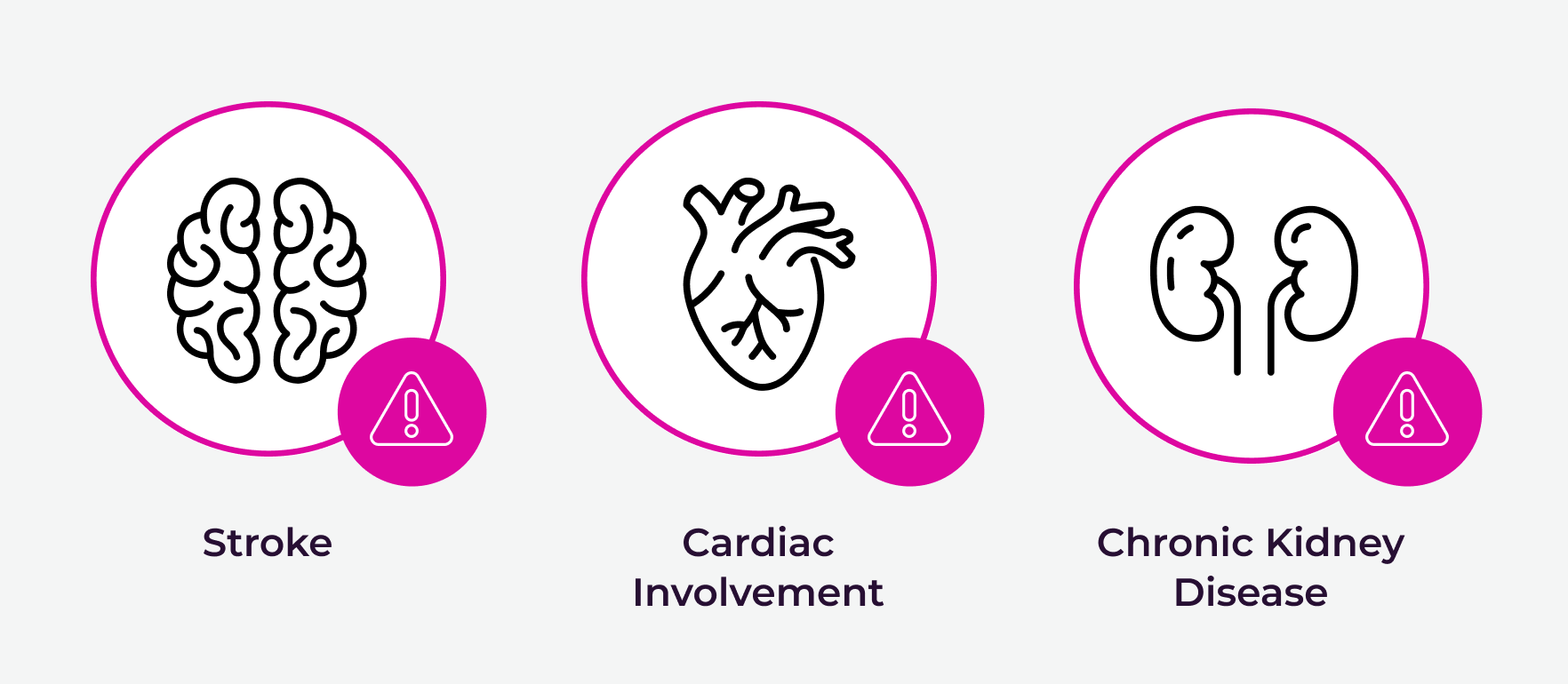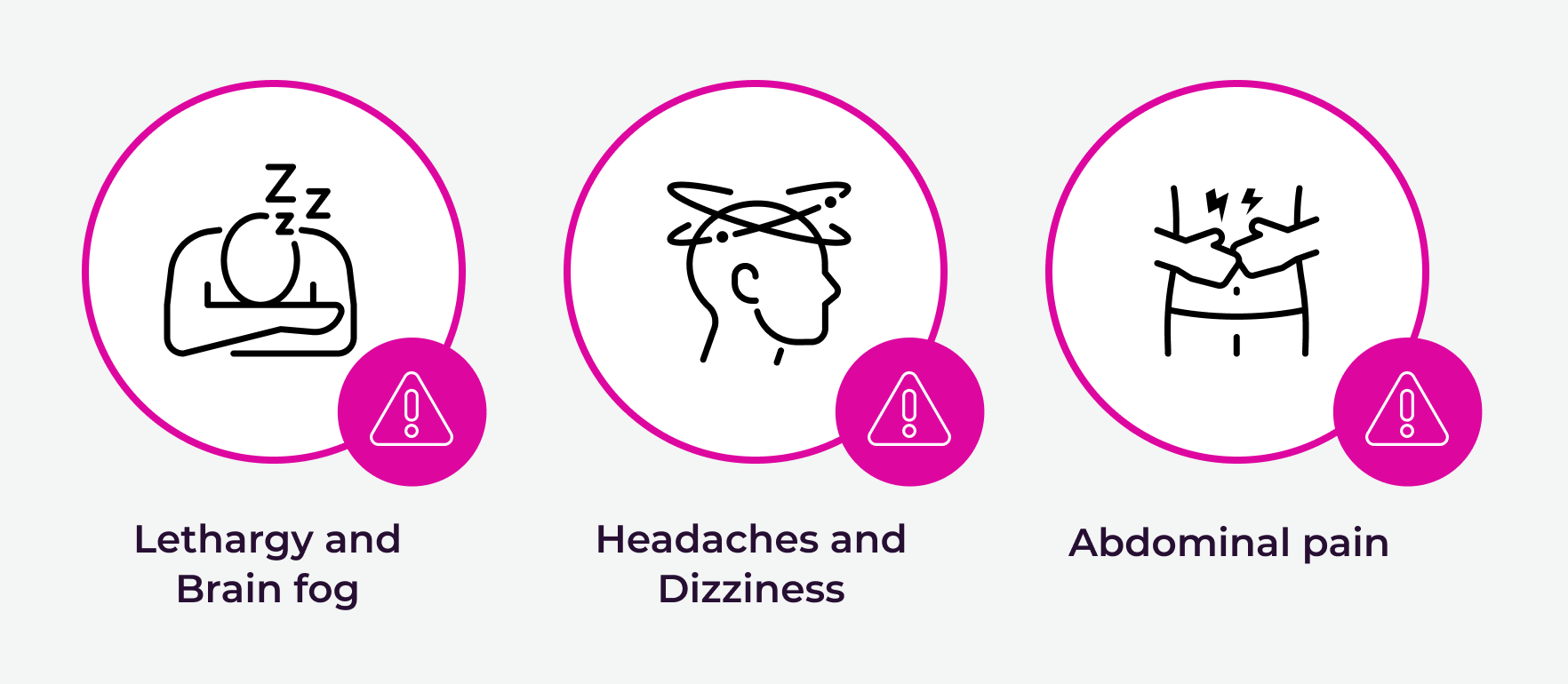Identifying cTTP patients
The clinical presentation of cTTP ranges from life-threatening, acute, overt TTP events to milder TTP manifestations, including thrombocytopenia, haemolytic anaemia, abdominal pain, headaches and neurological symptoms.
Denne sides oplysninger er på engelsk.
The clinical presentation ranges from life-threatening, acute, overt TTP events to milder TTP manifestations, including thrombocytopenia, haemolytic anaemia, abdominal pain, headaches and neurological symptoms.1 End-organ damage due to recurrent overt and nonovert TTP, such as stroke, chronic kidney disease, or cardiac involvement, can also develop.1

As well as acute events, ongoing subacute manifestations of cTTP can also occur despite the absence of typical clinical and laboratory findings.1,2 Symptoms of subacute cTTP can include lethargy, headaches, migraines and abdominal pain. It is important for clinicians to be aware of these manifestations as they may indicate underlying disease.2 Additionally, over time, cTTP can result in long-term neurological, cardiovascular, or renal complications.1 Retrospective data has shown that patients with TTP have a higher mortality rate as compared to the general population.3 This suggests that TTP should be viewed as a chronic disease with acute episodes.4,5

In a study integrating inputs from a literature review, expert opinion, and patient interviews, patients interviewed by telephone indicated that the most salient impacts of cTTP were the diminished ability to work/study, financial distress, feeling depressed, feeling anxious, and mood swings.6
In practice, the signs and symptoms associated with cTTP are highly complex and can vary widely between patients.1,7 They can range from asymptomatic disease, to a single episode and chronic-relapsing forms, and multiorgan failure.1,7 An increased awareness of the clinical manifestations of cTTP, including patient-reported outcomes, is important in order to provide adequate short-term and long-term treatment.7
cTTP, Congenital TTP
SmPC, Summary of product characteristics
TTP, Thrombotic thrombocytopenic purpura

Kontakt os på medinfoemea@takeda.com.
Oplysninger om produktresuméet kan findes her.
Birvirkninger eller uønskede hændelser skal indberettes til AE.DNK@takeda.com.
The clinical presentation of cTTP ranges from life-threatening, acute, overt TTP events to milder TTP manifestations, including thrombocytopenia, haemolytic anaemia, abdominal pain, headaches and neurological symptoms.
Prophylaxis is recommended for cTTP patients: